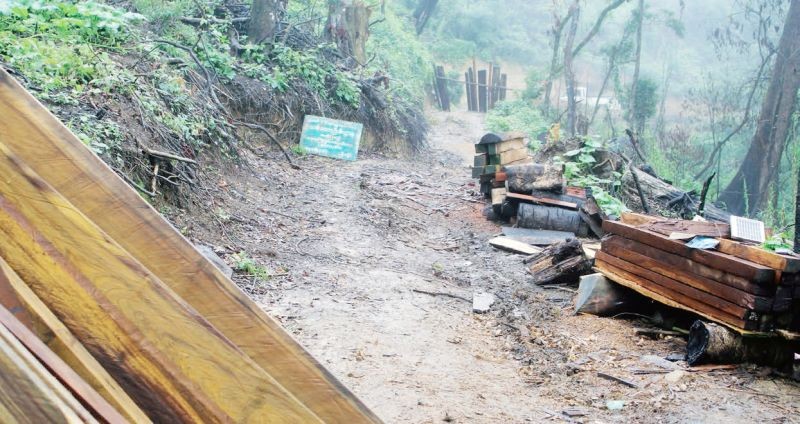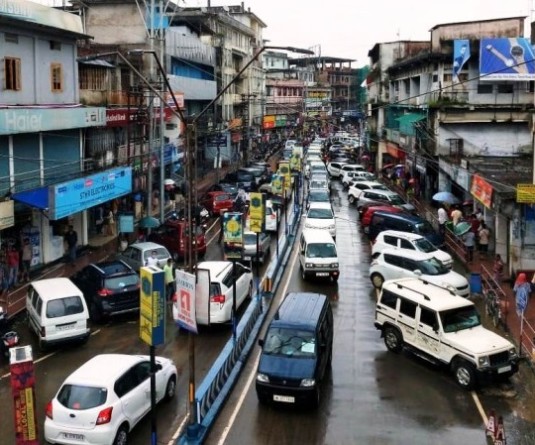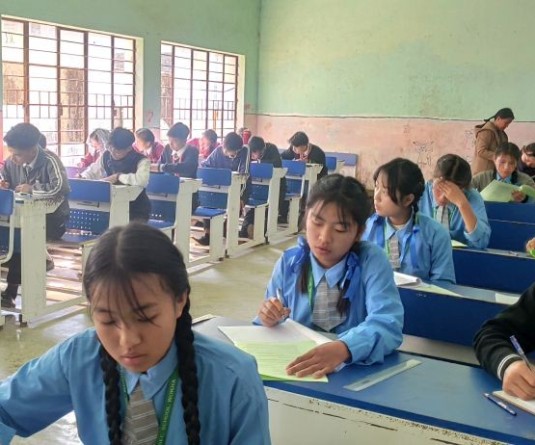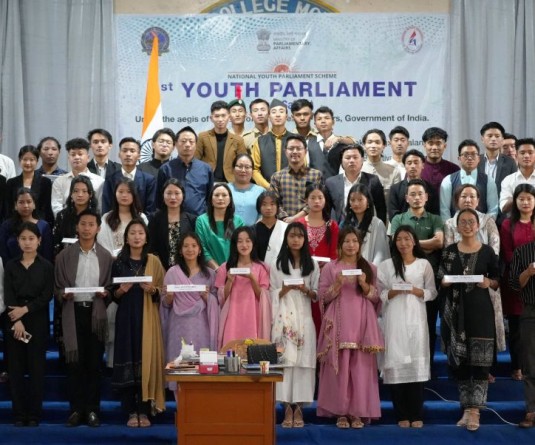Timber extraction around the Protected Public Forest signboard in Somra. (Photo courtesy RRtIP)

Naga communities in Myanmar faced with degrading forests
Morung Express News
Dimapur | February 28
In 2014, the residents of Somra, a Naga village in Myanmar, found a new signboard posted on the side of the road inside the community watershed forest area. The sign announced the proposed designation of 5,000 acres of Public Protected Forest (PPF).
Where exactly were these 5,000 acres within Somra’s customary land? Nobody in the village was sure because the government staff who posted the sign left without informing either the local customary or government authorities.
A report titled ‘Land and Forest Governance in the Naga Village Republic’ by the Resource Rights for the Indigenous Peoples (RRtIP) took the case study of Somra to understand what happens when Government of Myanmar departments implement land and forest management laws incompatible with the customary system in Naga villages.
“They end up undermining sustainable forest management,” the report, released in Yangon on February 27, concluded.
Claiming rights
The forest around the PPF sign has been managed by the community to protect the watershed and provide subsistence food, fuel, building materials and medicine, noted the RRtIP report.
The village chief and the tribal council convened a village meeting to discuss how to respond to what they essentially understood was the government claiming rights to their customary forest.
The Forest Department of the Government of Myanmar, informed the report, has been designating more forest areas as Permanent Forest Estate (PFE) in the past few years in order to reach the target set in the National Forestry Master Plan (2001–2030) to have 30% of the country’s land area within the PFE.
“The expansion of the PFE to new areas,” noted the RRtIP report, “caused some communities concern that it does not recognize their customary claims and restricts their access to the forests that they depend on and need for observing their cultural and religious traditions.”
After open discussion and debate, the community agreed that they would revise the customary rules for forest management in the proposed PPF area by opening the forest for both domestic and commercial use.
Degraded forests
As the community began to use the timber, the village agreed to share profits from timber sales, allocating 10% of the sale price to the village fund, 10% to the clan with claims to the forest and the rest to those who harvested and sold the timber.
While the village funds were judiciously used to fund public meetings, work-related travel costs for village authorities, etc., the forests were left degraded.
“Villagers noted a decline in wildlife in the area, especially deer and gaur. Customary authorities and community members would have preferred keeping their forest intact and their customary tenure secure over earning cash from selling timber,” stated the RRtIP report.
But government laws insensitively imposed on the land meant that vulnerability drove decisions made by the people instead of the customary systems that had secured these forests for generations.
“Undermining the customary system left both communities and the Forest Department with a degraded forest, a result that neither group wanted. Expansion of government administration without recognizing customary tenure poses a threat to the livelihood, environment, and culture of the Naga people living in Myanmar,” established the RRtIP.
The community recommended that the Forest Department learns more about the customary system for managing forests and recognizes their land tenure system through better understanding and communication.





